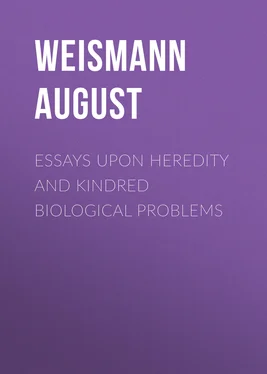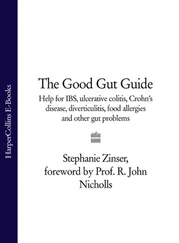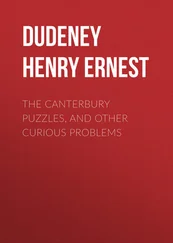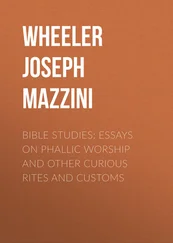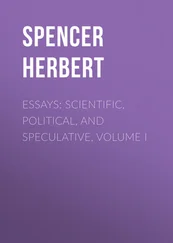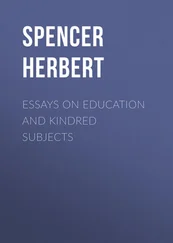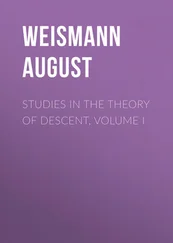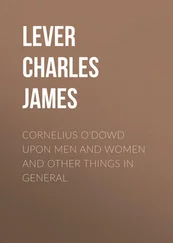August Weismann - Essays Upon Heredity and Kindred Biological Problems
Здесь есть возможность читать онлайн «August Weismann - Essays Upon Heredity and Kindred Biological Problems» — ознакомительный отрывок электронной книги совершенно бесплатно, а после прочтения отрывка купить полную версию. В некоторых случаях можно слушать аудио, скачать через торрент в формате fb2 и присутствует краткое содержание. Жанр: foreign_antique, Биология, на английском языке. Описание произведения, (предисловие) а так же отзывы посетителей доступны на портале библиотеки ЛибКат.
- Название:Essays Upon Heredity and Kindred Biological Problems
- Автор:
- Жанр:
- Год:неизвестен
- ISBN:нет данных
- Рейтинг книги:5 / 5. Голосов: 1
-
Избранное:Добавить в избранное
- Отзывы:
-
Ваша оценка:
- 100
- 1
- 2
- 3
- 4
- 5
Essays Upon Heredity and Kindred Biological Problems: краткое содержание, описание и аннотация
Предлагаем к чтению аннотацию, описание, краткое содержание или предисловие (зависит от того, что написал сам автор книги «Essays Upon Heredity and Kindred Biological Problems»). Если вы не нашли необходимую информацию о книге — напишите в комментариях, мы постараемся отыскать её.
Essays Upon Heredity and Kindred Biological Problems — читать онлайн ознакомительный отрывок
Ниже представлен текст книги, разбитый по страницам. Система сохранения места последней прочитанной страницы, позволяет с удобством читать онлайн бесплатно книгу «Essays Upon Heredity and Kindred Biological Problems», без необходимости каждый раз заново искать на чём Вы остановились. Поставьте закладку, и сможете в любой момент перейти на страницу, на которой закончили чтение.
Интервал:
Закладка:
We must now consider whether this definition, derived from observation of higher animals, may be also applied without alteration to the lower, or whether the corresponding phenomena which arise in these latter, differ in detail from those of the higher animals, so that a narrower limitation of the above definition is rendered necessary.
Götte believes the process of encystment which takes place in so many unicellular animals (Monoplastides) to be the analogue of death. According to this authority, the individuals in question, not only undergo a kind of winter sleep—a period of latent life—but when surrounded by the cyst they lose their former specific organization; they become a ‘homogeneous substance,’ and are resolved into a germ, from which, by a process of development, a new individual of the same species once more arises. The division of the contents of the cyst, viz. its multiplication, is, according to this view, of secondary importance, and the essential feature in the process is the rejuvenescence of the individual. This rejuvenescence however is said to not only consist in the simple transformation of the old individual, but in its death, followed by the building up anew of another individual. ‘The parent organism and its offspring are two successive living stages of the same substance—separated, and at the same time connected, by the condition of rejuvenescence which lies between them’ (l. c., p. 79). An ‘absolute continuity of life does not exist’; it is only the dead organic matter which establishes the connection, and the ‘identity of this matter ensures heredity.’
It is certainly surprising that Götte should identify encystment with a cessation of life, and we may well inquire for the evidence which is believed to support such a view. The only evidence lies in a certain degree of degeneration in the structure of the individual, and in the cessation of the visible external phenomena of life, such as feeding and moving. Does Götte really believe that it is an incorrect interpretation of the facts to assume that a vita minima continues to exist in the protoplasm, after its complexity has diminished? Are we compelled to invoke a mystical explanation of the facts, by an appeal to such an indefinite principle as Götte’s rejuvenescence? Would not the oxygen, dissolved in the water, affect the organic substance the life of which it formerly maintained, and would it not cause its decomposition, if it were in reality dead?
I, too, hold that the division of the encysted mass is of secondary importance, and that the encystment itself, without the resulting multiplication, is the original and essential part of the phenomenon. But it does not follow from this that the encystment should be considered as a process of rejuvenescence. What is there to be rejuvenated? Certainly not the substance of the animal, for nothing is added to it, and it can therefore acquire no new energy; and the forms of energy which it manifests cannot be changed, since the form of the matter is just the same after quitting the cyst as it was before. Rejuvenescence has also been mentioned in connection with the process of conjugation, but this is quite another thing. It is quite reasonable, at least in a certain sense, to maintain the connection of rejuvenescence with conjugation; for a fusion of the substance of two individuals takes place, to a greater or lesser extent, in conjugation, and the matter which composes each individual is therefore really altered. But in simple encystment, rejuvenescence can only be understood in the sense in which we speak of the fable of the Phœnix, which, when old, was believed to be consumed by fire, and to rise again from its own ashes as a young bird. I doubt whether this idea is in agreement with the physiology of to-day, or with the laws of the conservation of energy. It is easy to pull down an old house with rotten beams and crumbling walls, but it would be impossible to build it anew with the old material, even if we used new mortar, represented in Götte’s hypothesis by water and oxygen. For these reasons I consider the idea of rejuvenescence of the encysted individual to be contrary to our present physiological knowledge.
It is much more simple and natural to regard encystment as adapted for the protection of certain individuals in a colony from destruction by being dried up or frozen, or for the protection of the individual during multiplication by division, when it is helpless, and would easily fall a prey to enemies, or to secure advantages in some other way 61. The case of Actinosphaerium , mentioned by Götte, clearly demonstrates that rejuvenescence of the individual is not the only event which happens during encystment, for this would scarcely require six months. The long duration of latent life, from summer to the next spring, clearly proves that encystment is of the highest importance for the species, in order to maintain the life of the individual through the dangers of an unfavourable season 62.
When in this case, the specific organization degenerates to a certain extent, such changes depend in part upon the endeavour to diminish as far as possible the size of the organism—the pseudopodia being drawn in, while the vacuoles contract and completely disappear. The degeneration may also, perhaps, depend in part upon the secretion of the cyst itself, which implies a certain loss of substance 63. But degeneration chiefly depends upon the fact that the encystment is accompanied by reproduction in the way of fission, which seems to begin with a simplification of the organization, that is, with a fusion of the numerous nuclei. It is well known that many unicellular animals contain several nuclei—in other words, that the nuclear substance is scattered in small parts throughout the whole cell. But when the animal prepares for division, these pieces of nuclear substance fuse into a single nucleus which itself undergoes division into two equal parts 64during the division of the animal. It is evident that the equal division of the whole nuclear substance only becomes possible in this way.
There are, however, numerous cases which prove that the bodies of encysted animals may retain, during the whole process, exactly the same structure and differentiation, which were previously characteristic of them. Thus the large Infusorian Tillina magna , described by Gruber, can be seen through the thin-walled cyst to retain the characteristic structure of its ectoplasm, and the whole of its organization. Even the movements of the enclosed animal do not cease; it continues to rotate actively in the narrow cyst, as do the two or four parts into which it subsequently divides. Such observations prove that Götte’s view that ‘every characteristic of the previous organization is lost,’ is quite out of the question 65(l. c., p. 62).
For this reason I must strongly oppose Götte’s view that an encysted individual is a germ, viz. an organic mass still unorganized which can only become an adult individual by means of a process of development. I believe that an encysted individual is one possessing a protective membrane, in structure more or less simplified as an adaptation to the narrow space within the cyst, and to a possible subsequent increase by division, in short one in which active life is reduced to a minimum, and sometimes even completely in abeyance, as happens when it is frozen.
It is evident from the above considerations that encystment in no way corresponds with that which every one, including myself, understands by death, because during encystment one and the same being is first apparently dead and then again alive; and we merely witness a condition of rest, from which active life will again emerge. This would remain true even if it were proved that life is, in reality, suspended for a time. But such proof is still wanting, and Götte was apparently only influenced by theoretical considerations, when he imagined that death intervened where unprejudiced observers have only recognised a condition of rest. He apparently entirely overlooked the fact that it is possible to test his views; for all unicellular beings are in reality capable of dying: we can kill them, for example, by boiling, and they are then really dead and cannot be revived. But this state of the organism differs chemically and physically from the encysted condition, although we do not know all the details of the difference. The encysted animal, when placed in fresh water, presently originates a living individual, but the one killed by boiling only results in decomposition of the dead organic matter. Hence we see that the same external conditions give rise to different results in two different states of the organism. It cannot be right to apply the same term to two totally different states. There is only one phenomenon which can be called death, although it may be produced by widely different causes. But if the encysted condition is not identical with the death which we can produce at will, then natural death, viz. that arising from internal causes, does not exist at all among unicellular organisms.
Читать дальшеИнтервал:
Закладка:
Похожие книги на «Essays Upon Heredity and Kindred Biological Problems»
Представляем Вашему вниманию похожие книги на «Essays Upon Heredity and Kindred Biological Problems» списком для выбора. Мы отобрали схожую по названию и смыслу литературу в надежде предоставить читателям больше вариантов отыскать новые, интересные, ещё непрочитанные произведения.
Обсуждение, отзывы о книге «Essays Upon Heredity and Kindred Biological Problems» и просто собственные мнения читателей. Оставьте ваши комментарии, напишите, что Вы думаете о произведении, его смысле или главных героях. Укажите что конкретно понравилось, а что нет, и почему Вы так считаете.
